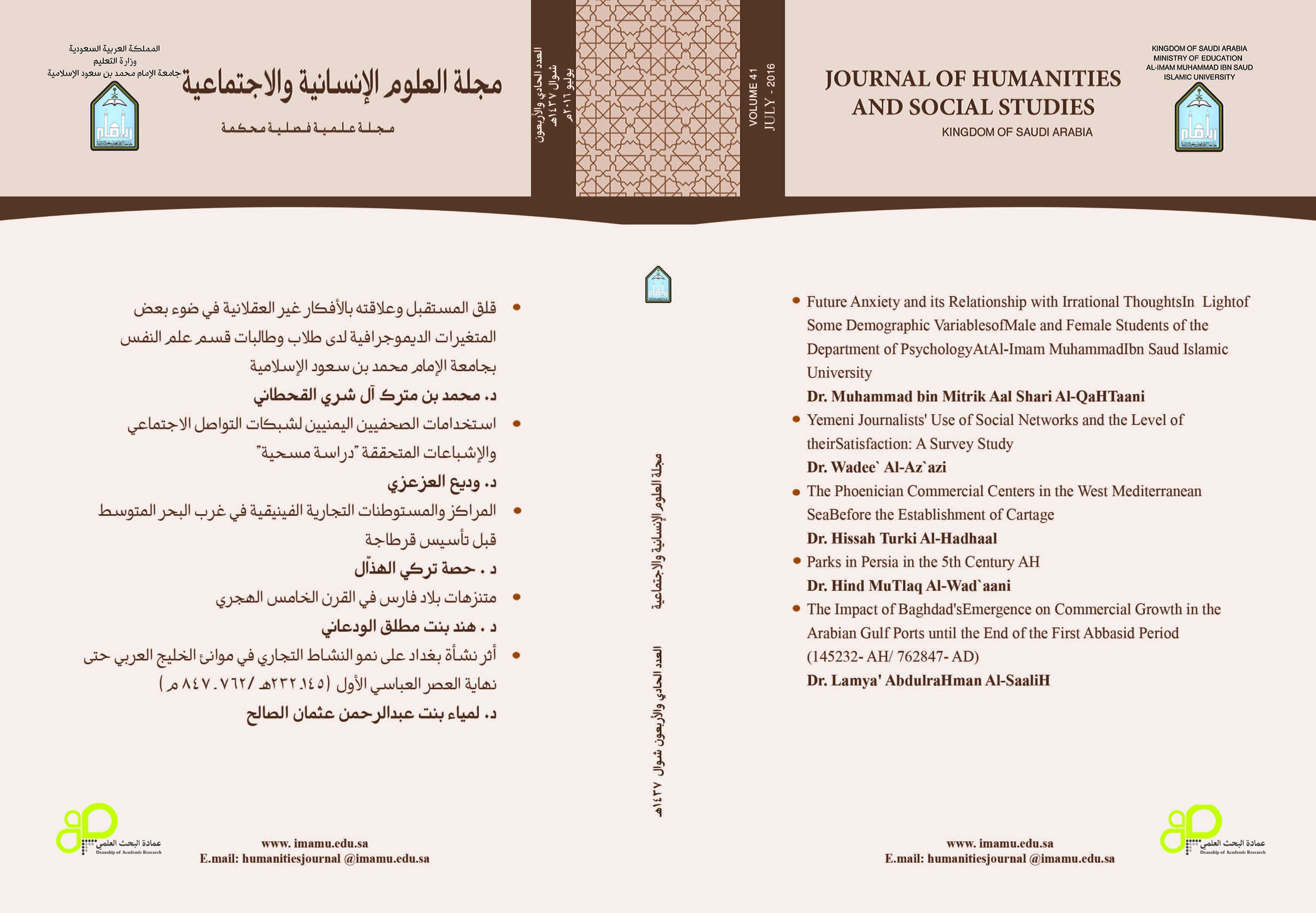Future Anxiety and its Relationship with Irrational Thoughts In Light of Some Demographic Variables of Male and Female Students of the Department of Psychology At Al-Imam Muhammad Ibn Saud Islamic University
Keywords:
Scale of Future Anxiety, Scale of Irrational BeliefsAbstract
The study aimed to identifying the nature of the relationship between future anxiety (overall score and sub-scale scores) and irrational beliefs in view of some demographic variables of male and female at the Department of Psychology, Al-Imam Muhammad Ibn Saud Islamic University (IMSIU) students. Purposely, the study explored the degree of difference between IMSIU male and female students of Psychology with high and low level of future anxiety (overall score and sub-scales scores) as measured by their scores on the Scale of Irrational Beliefs. To that end, the researcher adopted the random stratified method in selecting the participants of the study (n 224) on campus BA students: 104 first level students (54 males and 50 females) and 120 eighth level students (60 males and 60 females). The researcher used 2 instruments after checking their validity and reliability: Shuqair's (2005) Scale of Future Anxiety and a translated and modified version of Hooper and Layne's Scale of Irrational Beliefs adapted to the Arabian Context (Abdullah & Abdulrahman, 2002) and applied to the Saudi Context (Almutairi, 1434). Results showed that there is a statistically significant positive correlation at the level of 0.01 between the students' scores on the Irrational Beliefs Scale and their scores on the Future Anxiety Scale (overall score and 3 sub-scales: Anxiety related to future life problems, Anxiety Related to Health and Anxiety Related to Death, and Mental Anxiety, Anxiety Related to thinking of the future). Results revealed that there is no statistically significant correlation between the students' scores on the Irrational Beliefs Scale and their scores on two sub-scales of the Future Anxiety Scale (Despair of the Future; and Fear and Worry about Failure in the Future). Other statistically significant differences between the two variables that can be attributed to the level of study, gender and dimension of the scale were found, reported and discussed along with some recommendations for future research.




